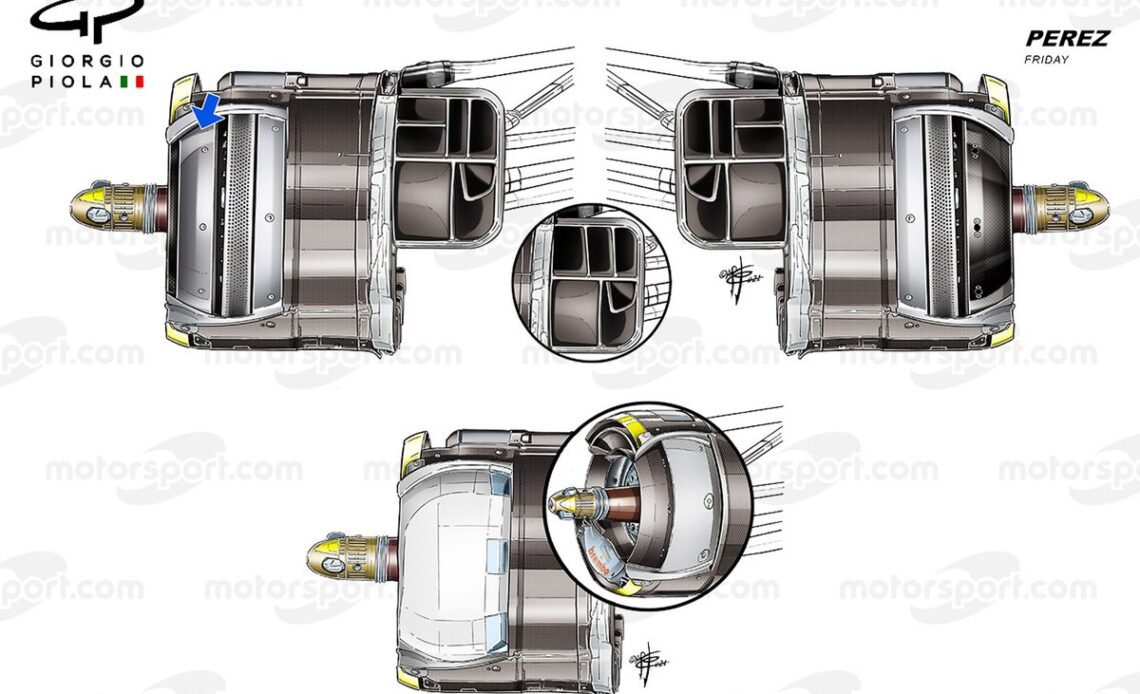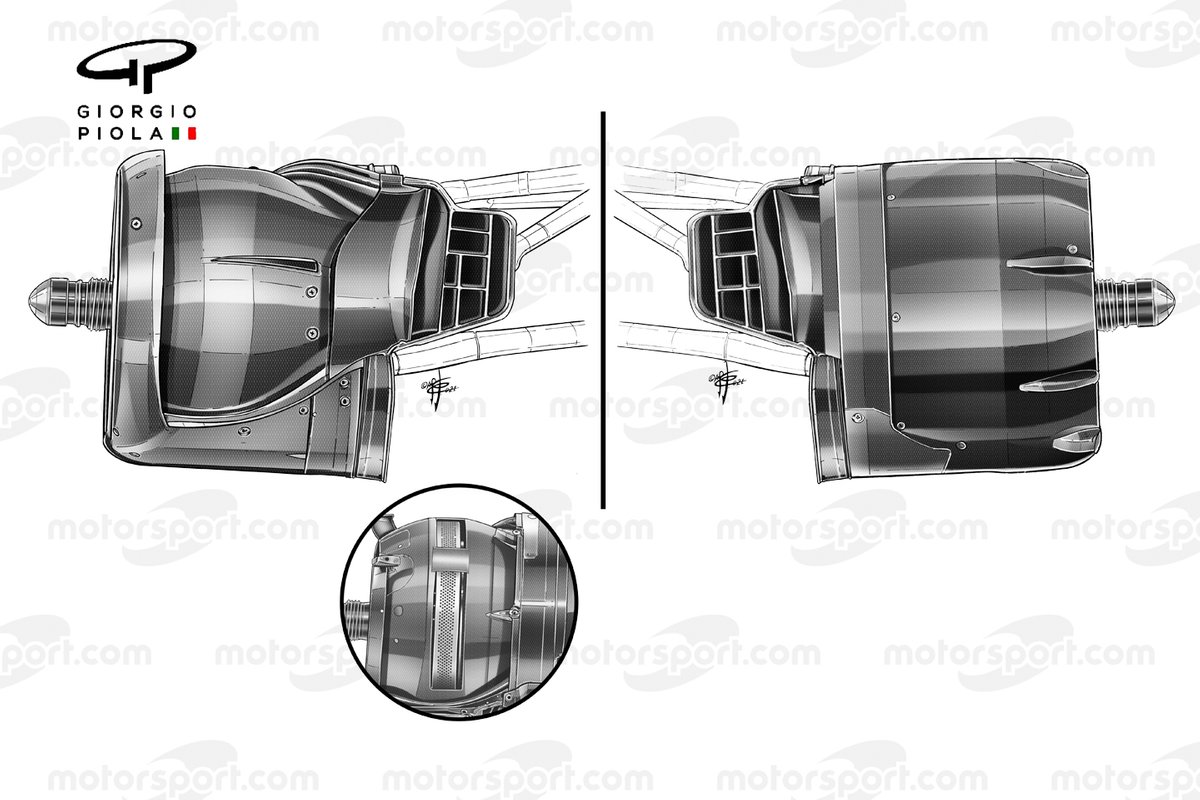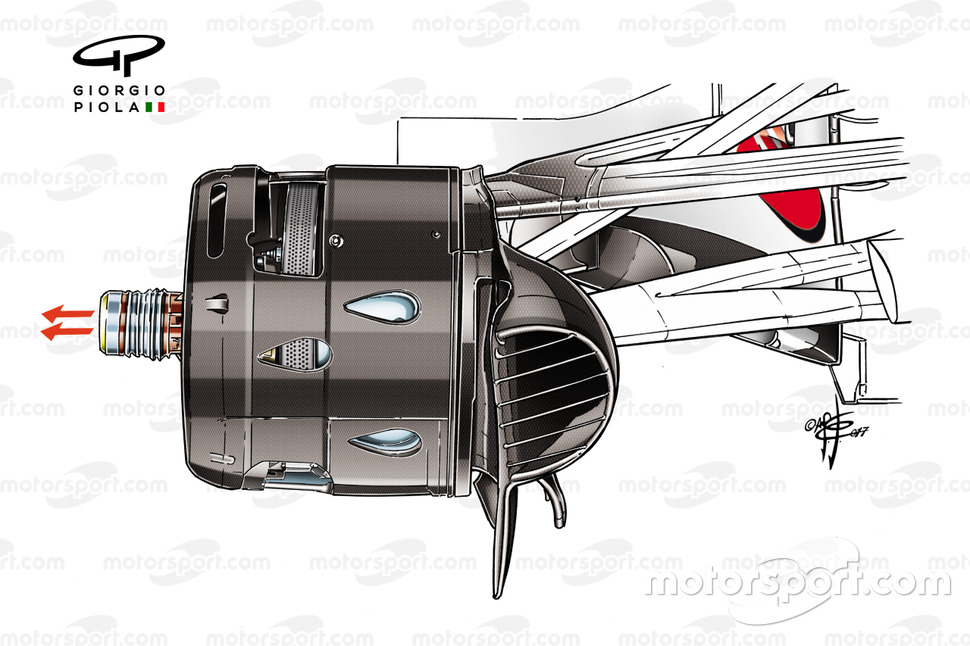The worries from drivers about the health implication of breathing in carbon dust during the course of a race weekend emerged after the Austrian Grand Prix when Sebastian Vettel in particular emerged from his car with a face spattered with black carbon.
Vettel said the long-running issue had worsened this season owing to the new brake duct layout, with drivers now not only subjected to the brake dust generated by a car they’re following, but also dust created by their own car.
“The design of the brake ducts this year, with the front axle, it is blowing all the brake dust into our faces and it is not good,” he said.
The regulations were changed for 2022 in regards to the design of the brake duct, in order to limit the potential for teams to generate aerodynamic outwash by blowing air out through the wheels.
As a consequence, the introduction of a mandatory rear facing duct outlet was aimed at keeping airflow centralised. However, this now appears to have triggered consequences on the carbon brake dust issue.
Under the previous regulations, teams were dumping not just airflow, but heat and brake dust directly out through the wheel face.
The freedom led to a raft of solutions that were heavily skewed towards the advantages that teams could yield from an aerodynamic perspective.
This not only resulted in complex brake duct designs but also solutions such as the blown axle and bespoke wheel rim designs
Click Here to Read the Full Original Article at Motorsport.com – Formula 1 – Stories…



